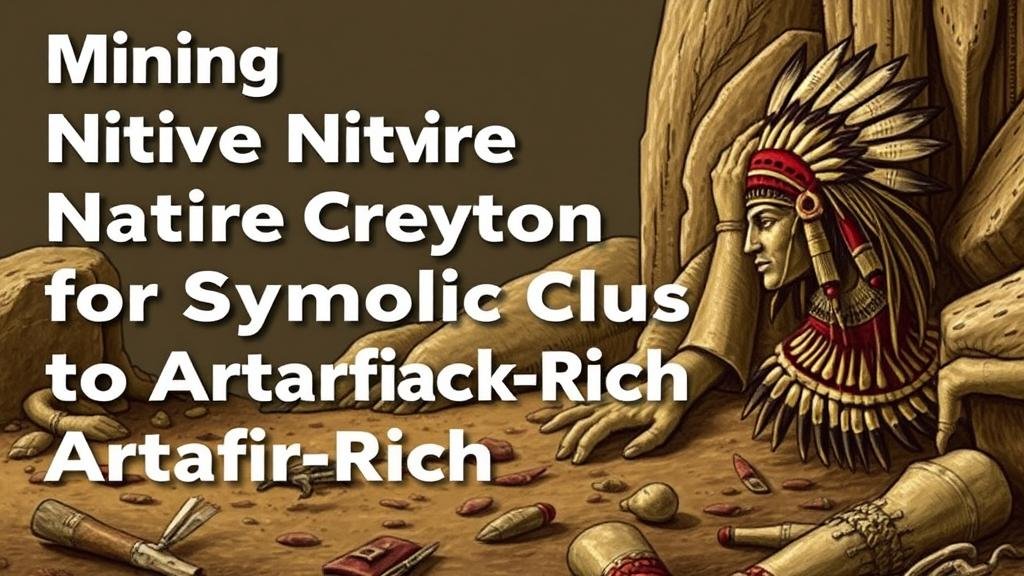Mining Native Creation Myths for Symbolic Clues to Artifact-Rich Locations
Mining Native Creation Myths for Symbolic Clues to Artifact-Rich Locations
This article explores the intersection of native creation myths and archaeological findings, specifically focusing on how these myths can provide symbolic clues to artifact-rich locations. Given the vast array of indigenous narratives that narrate the origins of people and their landscapes, this research highlights the potential for these stories to enrich our understanding of historical human behavior and cultural evolution within specific sites.
Theoretical Framework
Understanding the relevance of creation myths in archaeology requires a multidisciplinary approach. Anthropological theories suggest that myths often embody deeper truths about cultural practices and historical events. As noted by Joseph Campbell (2004) in The Hero with a Thousand Faces, myths serve as essential pathways to understanding collective psychology and cultural values.
Cultural Significance
Creation myths provide insight into the spiritual and cultural landscapes of prehistoric societies. For example, the Lakota Sioux’s creation myth emphasizes harmony with the earth, signifying an intrinsic relationship between the people and their environment (Dorsey, 2005). This relationship can cue archaeologists to look for specific ecological markers that align with the narratives, guiding them to sites of potential artifact concentration.
The research combines qualitative analysis of myth narratives with quantitative archaeological surveys. This approach allows for a comprehensive examination of how mythological references correlate with physical evidence. A survey of the Ancestral Puebloan myths and their links to artifact-rich sites in the Southwestern United States illustrates this methodology effectively.
Several archaeological sites have yielded significant artifacts that correspond to native myths.
- Chaco Canyon, New Mexico: The myths of the Pueblo peoples talk about the emergence from the underworld into the present world, referring to sacred mountainous areas as their homes. Excavations in Chaco Canyon yielded thousands of artifacts, indicating it served as a ceremonial center.
- Serpent Mound, Ohio: The effigy mound represents the snake in various Native American cosmologies. Archaeological studies have revealed artifacts that suggest ceremonial practices, aligning with the narratives surrounding the mound.
By focusing on the symbolic meanings embedded in myths, researchers can develop a pattern of significance around potential archaeological sites. For example, myths that mention water sources or mountains often indicate that these locations were crucial for survival and cultural practices. Analyzing such references can help archaeologists identify specific regions for site exploration.
The Tlingit tribe’s creation myth discusses the importance of the raven as a creator figure and a symbol of transformation. Many Tlingit archaeological sites are located along coastal areas rich in resources, which were likely symbolically linked to the ravens journey in the myths. Excavations at these locations have shown an abundance of historical artifacts, suggesting that connection to the narrative influenced settlement patterns.
Integrating native creation myths into archaeological practice can yield significant insights into artifact-rich locations. This study illustrates that myths are not merely fanciful tales but embody ecological, spiritual, and historical realities that can guide modern archaeological endeavors. Future research should focus on collaborative efforts with indigenous communities, ensuring respect and recognition of their narratives and contributions.
To wrap up, as archaeologists continue to search for evidence of human activity and culture, the wisdom encoded in native creation myths stands as a valuable resource. By mining these stories for symbolic clues, researchers can refine their explorations, uncovering artifacts that enrich our understanding of human history.
- Integrate creation myths into archaeological research methods to enhance contextual understanding.
- Consider geographical features mentioned in myths as potential indicators for site selection.
- Establish partnerships with indigenous communities to foster a collaborative research approach.
- Campbell, J. (2004). The Hero with a Thousand Faces. Princeton University Press.
- Dorsey, J. O. (2005). Lakota Creation Story. University of Nebraska Press.



